Floating Production – A Growing Segment in Transition
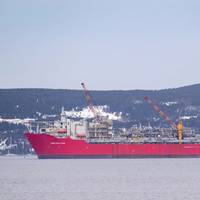
The specialized deepwater oil & gas and floating offshore wind segments will share many of the same stakeholders and supply chains, competing for increasingly scarce resources.To receive a full version of Inteletus analysis, click hereThe established floating production segment is forecast to experience continued growth through this decade, driving demand for, among other things, moorings, subsea systems, umbilicals, risers, flowlines and the large anchor handlers and subsea support vessels that will install and maintain the elements.At the same time…
Future Ships: Picture Perfect
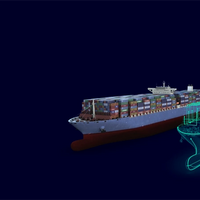
Big data, advanced computers and AI are allowing vessel designers to prepare models that leave essentially nothing to chance.“Lastly, it may be of considerable importance to form from the draught a block model of the vessel from which a still more accurate judgment may be formed of the fitness and beauty of the body. And should any defect be discovered, farther alterations must still be made, till the draught and the model are perfectly approved of. These different alterations and repeated calculations may appear very tedious…
Printed Circuit Board Fuel Cell Technology Tested on Narrowboat
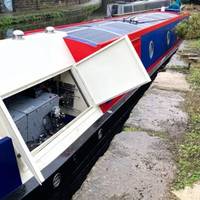
Bramble Energy has launched the world’s first hydrogen-electric boat powered by a printed circuit board fuel cell (PCBFC™).As the lead partner in the HyTime project working alongside custom engine builder Barrus, Bramble Energy has created a demonstration vessel that it says showcases the vast potential of its PCBFC™ technology to quickly and cost-effectively decarbonise the marine sector.A 57ft narrowboat was launched in Sheffield, UK, where it has successfully completed testing.
Report: Options for Retrofitting Ro-Pax with Hydrogen Propulsion Analyzed
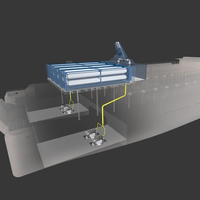
BMT and PA Consulting have explored the feasibility of retrofitting medium-sized Ro-Pax ferries with hydrogen propulsion and storage technology.The resulting white paper assesses the economic and technical feasibility of retrofitting existing vessels with hydrogen propulsion systems, presenting three retrofit alternatives with varying complexity, hydrogen demand and costs. These options involve dual-fuel engines with compressed gaseous hydrogen storage, hydrogen fuel cells with…
Chevron's Lubricating Oil Enables Fuel Flexibility in Marine Engines
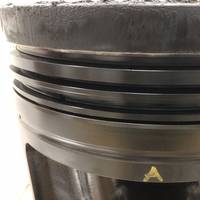
Chevron Marine Products said Tuesday that four-stroke engine operators could benefit from its new lubricating oil's versatility.HDAX 9700 was created to provide a solution for engines that run on multiple liquid and gaseous fuels and applications that require a low-sulfated ash lubricant, Chevron said.According to the company, the HDAX 9700t is also suitable for dual-fuel marine engines, as HDAX 9700 has successfully completed more than 20.000 hours of testing on a Wärtsilä dual-fuel power plant.“HDAX 9700 brings many benefits for operators of four-stroke engines.
Amogy: Policy and Standards Needed for Ammonia
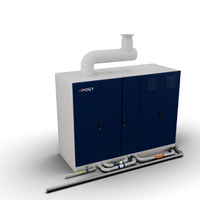
Ammonia-to-power solutions company Amogy Inc. has released a white paper titled "Ammonia as a Clean Energy Solution for Maritime Use."Ammonia has emerged as a promising fuel source for a wide range of vessel types, but realizing its potential requires a combination of production incentives, sector-specific policies, and standardized ammonia usage practices throughout the maritime value chain.The white paper examines ammonia's pivotal role in decarbonizing maritime applications.
ClassNK Contributes to Social Implementation of MASS
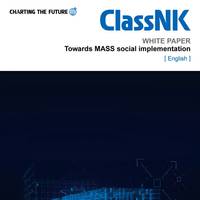
ClassNK is taking a leading role in the implementation of safe and efficient maritime autonomous surface ships (MASS) through a program of research, rule-development, technology trials and certification.While the regulatory framework covering MASS remains a work in progress, it is clear that autonomous ship technologies are already having a transformative effect on shipping.By autonomously executing certain functions that would typically be performed by crew – especially tasks…
Report: Five Digitalization Steps that can Drive OSV Fuel Efficiency

A new white paper published by maritime performance management company Opsealog sets out five practical steps that OSV operators can take to secure improvements in fuel efficiency through better data analytics.Existing data that companies are already collecting, for example in mandatory logbooks, can enable significant vessel and fleet efficiency gains, says Opsealog.With case studies drawn from Opsealog’s eight years of experience across the world’s offshore markets, the research highlights how having detailed digital monitoring in place helps owners…
North Korea Is Growing Its Navy with Submarines and Nuclear Drones. But Why?

Over the past year North Korea has moved to boost its navy with new nuclear weapons, including an underwater drone, warships, and its first operational missile submarine, unveiled on Friday.North Korea's navy has historically been dwarfed by the country's land forces, and overshadowed by its rapidly advancing ballistic missile program.Now, leader Kim Jong Un has said the navy will play a key role in the country's nuclear deterrence, and analysts say it may also assure support among naval commanders and boost national pride."Until quite recently…
Amogy Calls for Ammonia Incentives
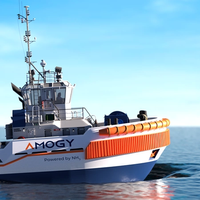
In its recently published white paper, ammonia-to-power technology company Amogy calls for policy makers to provide clear incentives for the uptake of ammonia as a shipping fuel.The paper Ammonia as an Essential Energy Carrier for the Energy Transition states that shipowners currently lack investment support for zero carbon propulsion systems and technologies.In the US, strong progress is being made on clean ammonia production. According to International Energy Agency project data…
Shipping's Uptake of Biofuels Likely to be Challenged by Scarcity of Supply
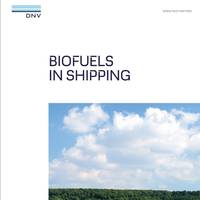
DNV's latest white paper “Biofuels in shipping” finds that the flexibility of biofuels can enable the shipping industry to accelerate its journey towards decarbonization, but current limitations in production capacity may impact short-term supply and create stiff competition with other sectors.The current global production capacity of sustainable biofuels is around 11 million tonnes of oil equivalent (Mtoe) per year. DNV estimates that the limit for the global sustainable and economical biofuel potential lies between 400 – 600 Mtoe per year in 2030…
Powering the North American Maritime Fuel Transition

Offshore service vessels, along with workboats serving harbors and inland rivers, have embarked on an industry-wide voyage toward reduced emissions of greenhouse gasses. Professor Craig Philip, a faculty member with Vanderbilt University’s Center for Transportation and Operational Resilience (VECTOR) and former CEO of Ingram Barge Company, provides this context: “The Maritime Sector has long provided shippers with the most fuel-efficient and sustainable freight transport option…
Floating Offshore Wind: New Seascape, New Challenges
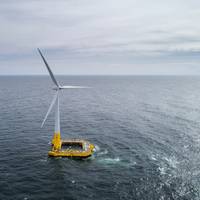
Offshore wind energy planners are giving close review to fixed-tower systems in order to extend lessons learned to floating wind towers, under development now. In the U.S., floating towers have been most closely associated with plans for new wind energy areas (WEA) in the Pacific, off of California and maybe Oregon and Washington. But important research is also taking place in Maine, at the University of Maine, because of deep ocean Atlantic areas there, and floating towers may also be used in the Gulf of Mexico.As most readers likely know…
Maritime Communications: Easier, Faster, Cheaper
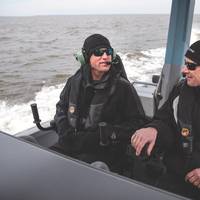
In November 2021, GTMaritime published a white paper: “Maritime Communications - A look over the horizon.” The report, available here, is built around three broad Sections – 1. “Basics of marine Communications;” 2. “The connected ship;” and 3. “Special services.”Then, each Section presents a closer look at various topics. The “Basics” section, for example, covers regulatory issues established by IMO treaties and national agencies. It presents the terms and concepts that define satellite systems and networks…
Navy Establishing Unmanned Surface Vessel Fleet for Persistent ISR in Middle East

“We're not tinkering. We're building enhanced maritime domain awareness.”The U.S. Navy’s Task Force 59, based in Bahrain as part of the U.S. Naval Forces Central Command (NAVCENT) and U.S. Fifth Fleet, is advancing the operational employment and integration of unmanned systems and artificial intelligence in fleet operations.According to Vice Adm. Brad Cooper, the fleet commander, unmanned systems and artificial intelligence are helping to accelerate innovation, especially in such a vast area of responsibility (AOR)“It's 5…
U.S. Gulf of Mexico Offers Tremendous Advantages for CCUS, But Regulatory Support Required, NOIA Says
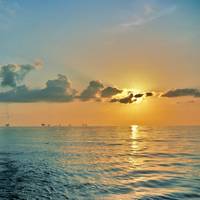
The U.S. National Ocean Industries Association (NOIA) on Wednesday released the policy paper, Carbon Capture, Use, & Storage: An Economic, Employment, & Climate Opportunity for the U.S Offshore Region, where it says that while the U.S. Gulf of Mexico offers "remarkable emissions reduction opportunity here at home," the industry needs certainty and predictability in the regulatory system."Along with key policy recommendations, the document details the vast advantages that the deployment of carbon capture, use, and storage (CCUS) in the U.S.
Seismic Isolation System for Pair of Quayside Container Cranes
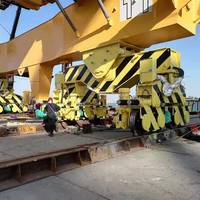
A seismic isolation system provided by Casper, Phillips & Associates Inc. (CPA) has been installed on two quayside container cranes.The crane base anti-seismic isolation system (BASIS) is built on non-linear time history analysis (NLTHA) and is designed to protect the crane main structure from damage even in contingency level earthquakes. BASIS has been successfully installed and commissioned on two cranes that are in a major seismic zone in Turkey. The cranes, installed at Asyaport, have a 100 ft. (30.48m) gantry span, 223 ft. (68m) outreach, 66 ft. (20m) back-reach, and 152 ft.
DNV, Nakilat Team to Improve Vessel Software Quality

Nakilat, DNV, and a group of yards and system suppliers – ABB, Honeywell, Kongsberg and Wärtsilä + Hudong-Zhonghua – have teamed on a joint development project (JDP) to elevate software reliability and maintenance during operations. The JDP, which was initiated in 2020 by Nakilat, has resulted in the launch of a new DNV Recommended Practice (DNV-RP-0582), published in June 2021.“With one of the largest LNG shipping fleets in the world, we are intimately aware of the importance of Information Technology (IT) integrity in ensuring safe…
DNV GL Sees 'Safety Gaps' on Path to Digitalization, Decarbonization

A new approach to safety is necessary along the maritime industry's rapid transition to a decarbonized, digitally smart future, says classification society DNV GL in a new white paper released Tuesday.The white paper, “Closing the safety gap in an era of transformation”, identifies a looming “safety gap” between shipping’s existing approach to safety risks and its ambitions for greater digitalization and the adoption of alternative fuels. According to DNV GL, the new technologies…
China Pledges to Build 'Polar Silk Road' Over 2021-2025
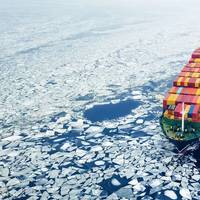
China will construct a “Polar Silk Road” and actively participate in the development of Arctic and Antarctic regions, it said in its new 2021-2025 “five-year plan” published on Friday.The plan said China would “participate in pragmatic cooperation in the North Pole” and “raise its ability to participate in the protection and utilization of the South Pole”.China has been eyeing lucrative mineral resources as well as potential new shipping routes in Arctic regions, as ice caps recede…
ABS Publishes Guidance on the Use of Biofuels in Shipping

Classification society ABS continues its series of alternative fuels guidance with the publication of its latest whitepaper examining the potential of biofuels in shipping.The Sustainability Whitepaper: Biofuels as Marine Fuel gives an overview of the various types of marine liquid biofuels that are “drop-in” fuel options for replacing conventional fuels in both the near- and long-term and their potential to contribute to industry decarbonization goals. Other aspects considered include safety…
DNV GL Advises ‘Mind the (Safety) Gap’ as Maritime Transforms
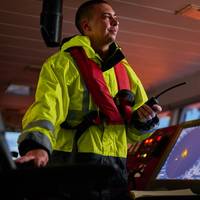
A new approach to safety is necessary along the maritime industry's rapid transition to a decarbonized, digitally smart future, says classification society DNV GL in a new white paper released this week, and as discussed on Maritime Reporter TV with Knut Ørbeck-Nilssen, CEO of DNV GL - Maritime and Fenna van de Merwe, Principal Consultant at DNV GL, the report’s author.The white paper entitled “Closing the Safety Gap in an Era of Transformation”, identifies a looming “safety gap”…
Biofouling in Niche Areas: Addressing the Blind Spots
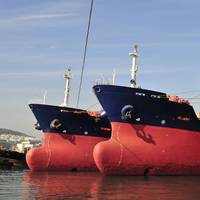
In a recent study that I-Tech conducted with U.K. independent marine coatings consultants, Safinah Group, we estimated that unacceptable levels of hard fouling, predominantly barnacles, across the global commercial could be responsible for at least 110 million tons of excess carbon emissions, with a significant proportion of the fleet suffering from a severe level of hard fouling.It’s a growing risk for owners; in the last few years biofouling has been thrust into the spotlight…





